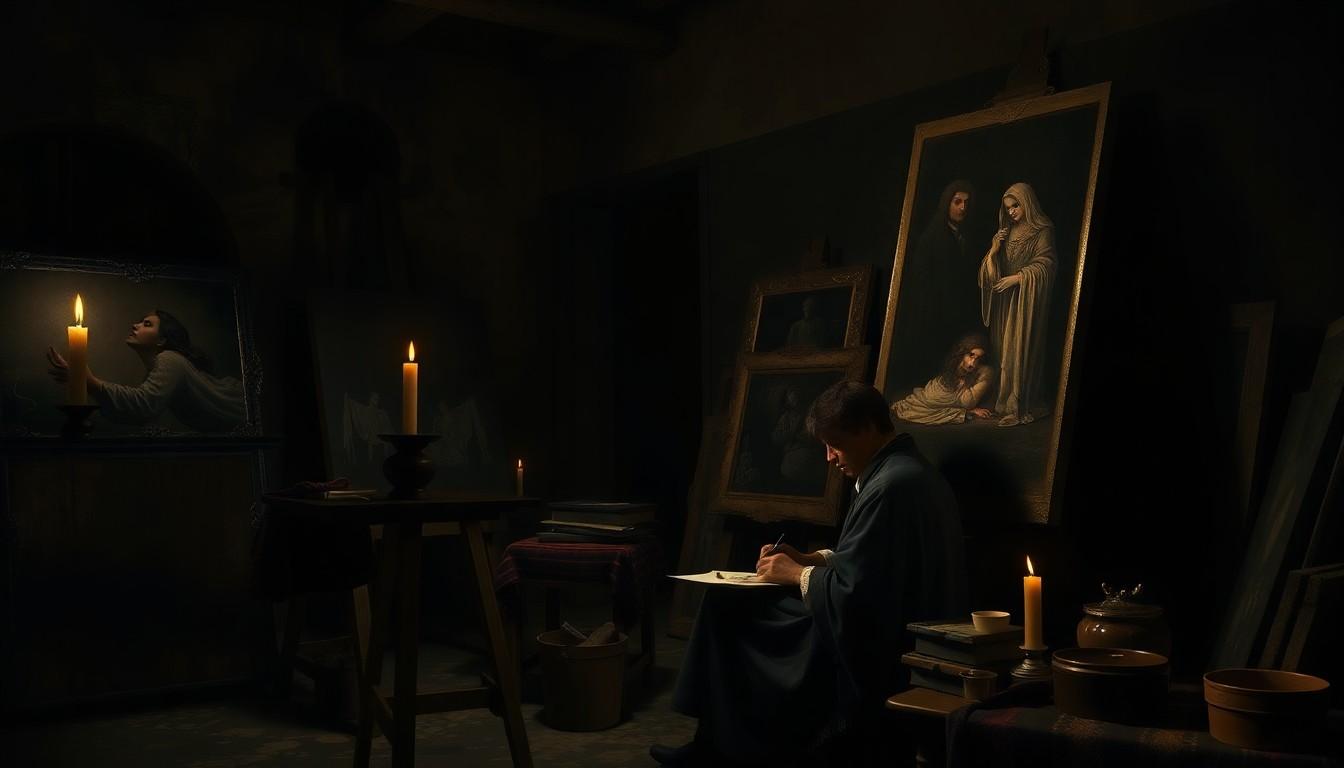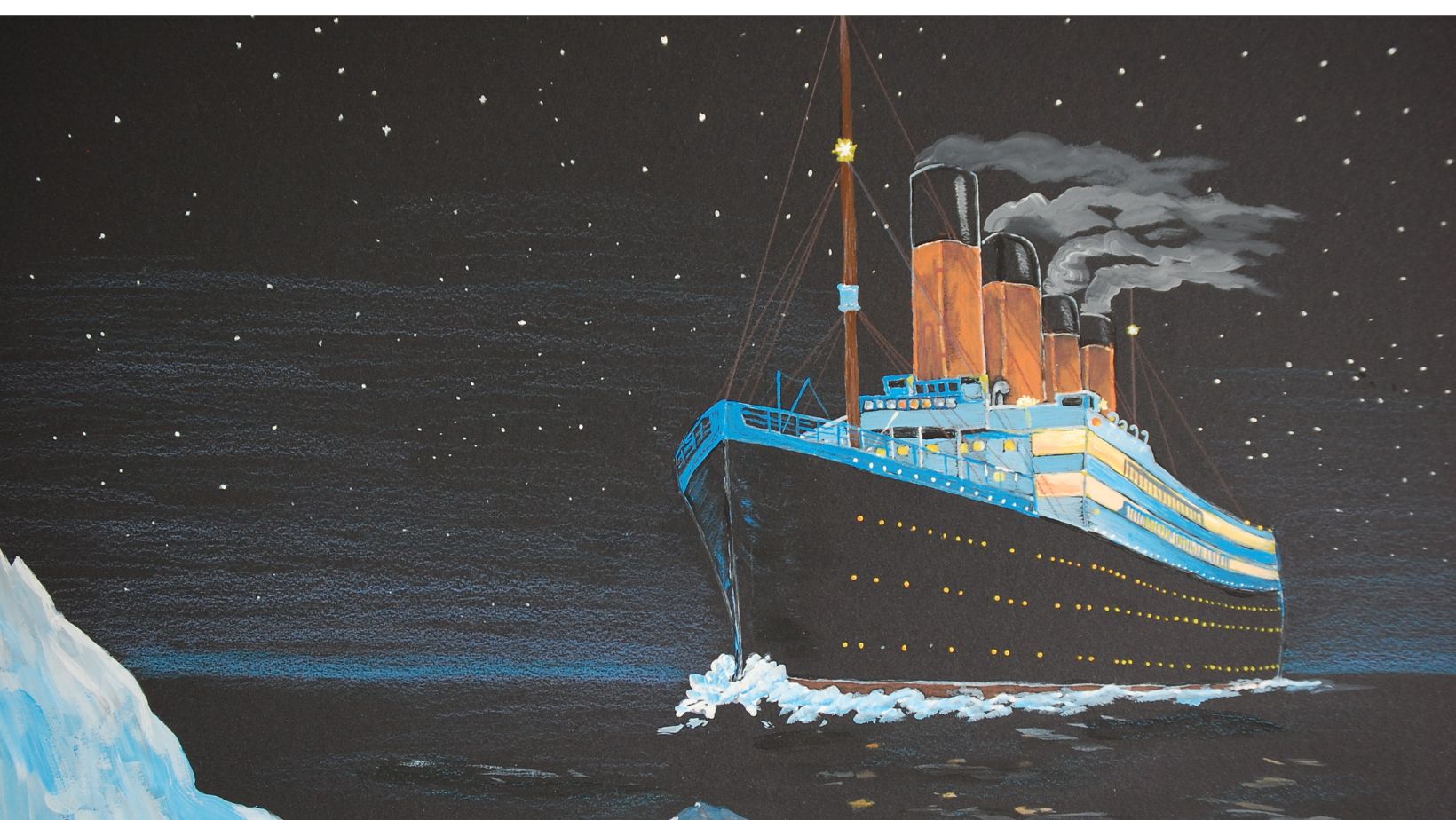In the realm of art, few pieces spark as much intrigue and debate as the apparition painting. This captivating work doesn’t just hang on walls; it haunts the imagination, blending mystery with a dash of the supernatural. Is it a masterpiece or just a figment of an overactive mind? One thing’s for sure: it’s got more layers than an onion at a cooking class.
With its ghostly figures and ethereal vibes, the apparition painting invites viewers to step into a world where reality and the otherworldly collide. Whether you’re an art aficionado or someone who thinks “abstract” is just a fancy word for “I don’t get it,” this painting promises to tickle your curiosity and maybe even your funny bone. Get ready to explore the allure of this enigmatic artwork and discover why it continues to captivate audiences across generations.
The Apparition Painting
The Apparition Painting, created by Spanish artist Francisco de Goya in the late 18th century, showcases the intersection of reality and the supernatural. This artwork features ghostly figures, which evoke a sense of mystery and provoke thought about the nature of existence. Each element in the painting contributes to its haunting atmosphere.
Art critics often discuss its complex themes. Figures in the foreground depict a religious motif, while the spectral presence in the background challenges viewers’ perceptions. Many interpretations suggest the painting serves as a commentary on human fears regarding death and the unknown.
Goya’s masterful use of light and shadow enhances the painting’s emotional depth. The contrasting colors draw the eye, guiding perception toward the central apparition. Such techniques amplify the sense of eeriness, compelling viewers to confront their own beliefs about the afterlife.
This preeminent work remains influential within art circles. Scholars frequently analyze its relevance to Romanticism, illustrating a shift toward individual emotion in art. Audiences worldwide continue to be drawn to its enigmatic qualities and the questions it raises about spirituality and existence.
Overall, The Apparition Painting stands as a testament to Goya’s skill and innovative vision. It prompts ongoing exploration into its layered meanings, ensuring its place in both art history and contemporary discussion.
History of The Apparition Painting
The Apparition Painting holds a significant place in art history, reflecting the transitional period from the Baroque to Romanticism. Francisco de Goya, a pivotal figure, created this haunting work in the late 18th century.
Artist Background
Francisco de Goya emerged as a leading Spanish painter and printmaker. His career spanned a tumultuous era marked by political upheaval and cultural shifts. With strong influences from both Enlightenment ideas and traditional Spanish themes, Goya’s style evolved uniquely. He began as a court painter, capturing the royals with detailed realism. Over time, his focus shifted towards subjects that illuminated human emotion and societal commentary, often blending the real with the supernatural. Goya’s contributions established him as a precursor to modern art movements.
Creation Process
The creation process of The Apparition Painting involved meticulous planning and execution. Goya conceptualized the piece as a reflection of moral and spiritual dilemmas. He used oil on canvas to bring his vision to life, applying strong contrasts of light and shadow. The resulting effects imbue the figures with an ethereal quality. During the process, Goya experimented with techniques to evoke depth and movement, creating a sense of tension. His innovative approach in combining realism with the supernatural challenges viewers’ perceptions. In this work, Goya enveloped the viewer in an unsettling atmosphere that continues to provoke thought and interpretation.
Themes and Symbolism
The Apparition Painting by Francisco de Goya embodies rich themes and striking symbolism, inviting viewers to explore deeper meanings.
Spiritual Meaning
Spirituality plays a significant role in Goya’s work. Ghostly figures emerge from shadows, representing souls trapped between worlds. The juxtaposition of light and darkness highlights human fears surrounding death. Goya’s depiction of spectral imagery provokes contemplation about mortality and the afterlife. Viewers often interpret the central apparition as a guiding force or a warning. By blending the sacred with the supernatural, Goya opens dialogues about faith, hope, and the unknown.
Cultural Significance
Cultural contexts around The Apparition Painting are profound. This work reflects shifting societal values during the transition from Baroque to Romanticism. Goya positions himself as a commentator on humanity’s concerns and aspirations. Ghostly elements resonate with contemporary obsessions about spirituality and existence. His artwork contributes to discussions about individual emotion and collective anxiety. Goya’s innovative approach engages audiences, making the painting a critical piece within the canon of Western art history.
Artistic Techniques
The techniques used in The Apparition Painting showcase Goya’s artistic brilliance. His mastery in color and composition breathes life into the supernatural themes depicted.
Color Palette
Goya employs a muted color palette, primarily utilizing shades of gray, brown, and ochre. Dark tones dominate the composition, creating a somber atmosphere that enhances the painting’s eerie qualities. Hues of white and pale blue punctuate the scene, drawing attention to the central apparition. This strategic use of color reinforces themes of mystery and the ethereal. Goya’s choice of colors embodies emotional depth, creating an unsettling yet captivating visual experience.
Composition and Style
The composition of The Apparition Painting features a dynamic interplay between light and shadow. Goya positions the central figure, emphasizing its spectral presence while surrounding it with ghostly forms lurking in darkness. A triangular arrangement directs the viewer’s gaze toward the apparition, enhancing its significance. Loose brushwork contributes to the overall supernatural feeling, allowing the figures to appear both real and otherworldly. Goya blends realism with abstraction, challenging traditional artistic norms while exploring complex human emotions.
Reception and Impact
The reception of The Apparition Painting highlights its enduring significance in the art world. Critics often regard it as a pivotal work that captures the essence of human emotion and fear.
Contemporary Relevance
Contemporary discussions around The Apparition Painting reveal its impact on modern art and cultural thought. This work invites reflection on themes of mortality and the supernatural that resonate in today’s society. Many artists draw inspiration from Goya’s exploration of psychological states, as they grapple with similar existential questions. Scholars examine its relevance in relation to contemporary issues like mental health and spirituality. Its haunting imagery continues to invoke conversations about the afterlife and human experience, making it timely for audiences in various contexts.
Influences on Future Artists
The Apparition Painting profoundly influences future generations of artists across different styles. Surrealists and expressionists often cite Goya’s work for its dream-like qualities and vivid emotional depth. Artistic techniques like light manipulation and shadow play can be traced in the works of modern painters who explore atmospheric effects. Contemporary artists often reinterpret Goya’s themes of isolation and fear, aligning them with current societal anxieties. His masterful balance of realism with supernatural elements encourages ongoing exploration in various artistic movements, underscoring the painting’s lasting legacy.

